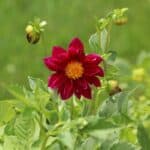Blanket flowers (Gaillardia) are popular in sunny gardens because they add lots of cheer with their bright red, orange, and yellow variegated blooms. Gardeners love these short-lived perennials because they are hardy and so easy to grow.
These vivid flowers can cheer up any garden space but look especially charming if you grow them along with other vigorous blooming plant species.
Some of the best blanket flower companion plants include other native species like tickseed flowers, echinacea flowers, Shasta daisies, yarrows, and daylilies. These flowers are ideal for adding more blooms and color to your garden.
In this companion planting guide, we will take a closer look at these beautiful flowers and discuss creative ways to use them to create showy spaces in your garden.
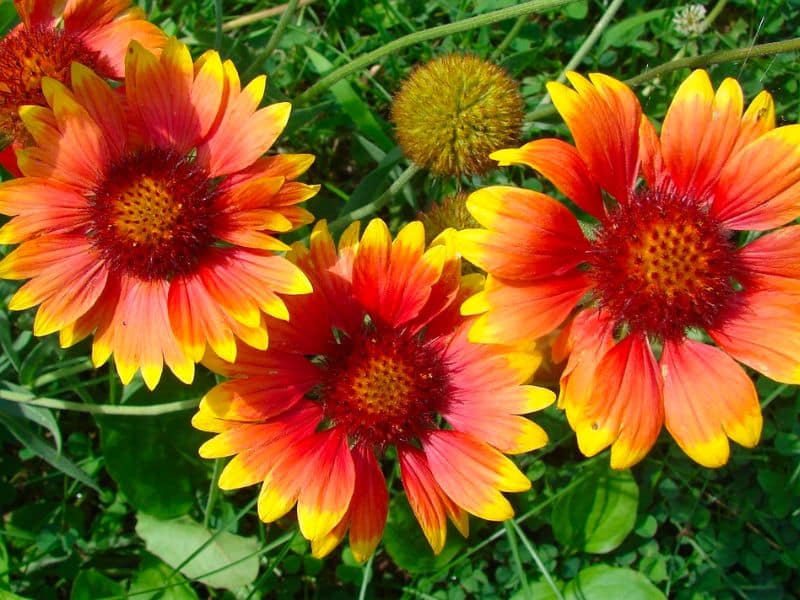
What to Grow with Blanket Flowers
The most important thing to keep in mind when you are doing companion planting is growing requirements. Plants won’t survive if you don’t grow them in the right conditions. It is also essential to pair flowers that can complement one another together.
For companion planting with blanket flowers, it is best to focus on warm-toned flowers that will complement these perennials’ vivid yellow, orange, and red hues.
It is also essential to choose neighboring plants that thrive in full sun, warm temperatures, dry climates, and poor soil conditions because this is precisely where blanket flowers grow best.
Let’s look at other drought and heat-tolerant ornamental plants that can grow well next to blanket flowers.
Tickseed Flowers
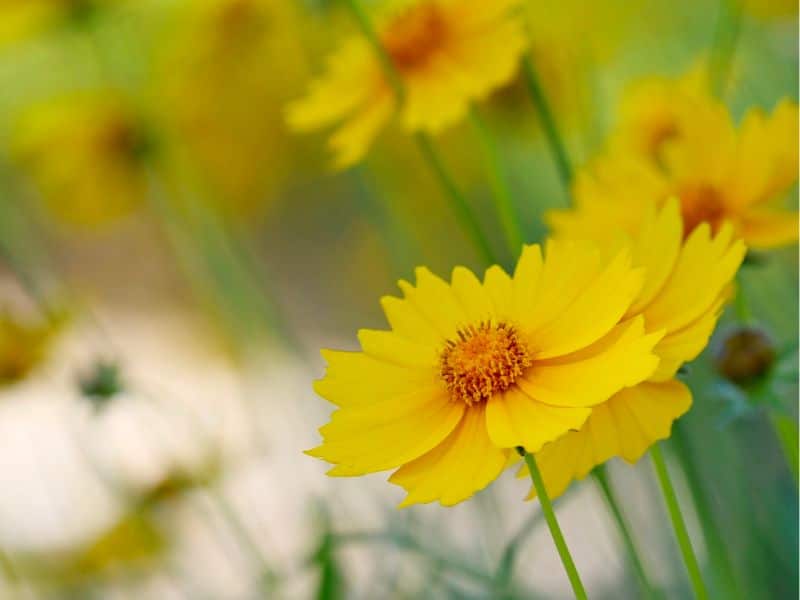
Tickseed (Coreopsis) or calliopsis is one of the best companion plants to include in your blanket flower garden because the yellow flowers go well with the warm tones of these plants. The delicate foliage of these blooms will also soften up your spaces and add a lot of texture to your garden.
Coreopsis flowers flourish in full sun but can survive in light shade. They are great garden fillers or ground covers for taller plants and can grow well in containers. These bright flowers can be used as borders in garden beds and garden fillers, and they are functional for attracting pollinators to your spaces.
Blanket flowers and tickseed have a similar growing height and can easily be mixed alongside one another to create a vivid sun-kissed garden look.
Coneflowers
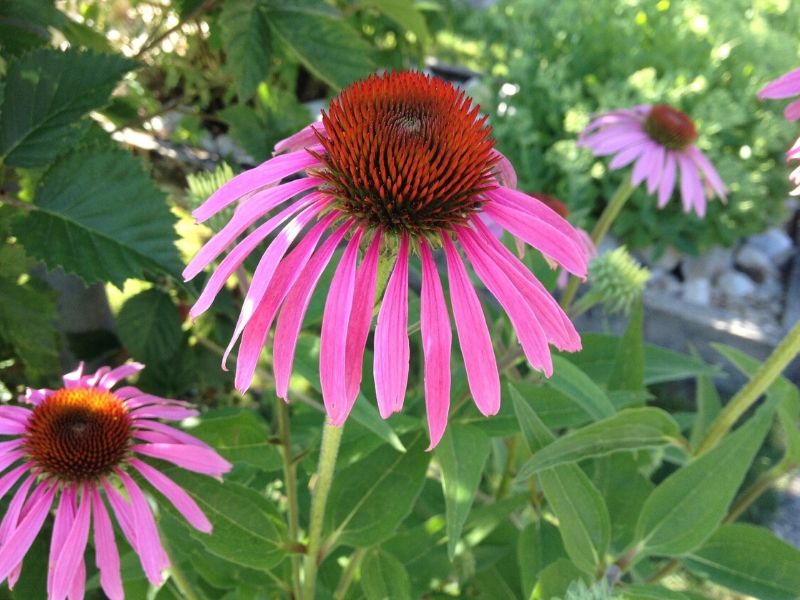
Coneflowers (Echinacea) are great blanket flower companions for cutting or wildflower gardens. They are a little bit taller, which adds more vertical interest to your spaces, and their vivid blooms can look striking as they stand out among mass-planted blanket flowers.
Pink coneflowers are the most common variety and can look attractive next to the sunny hues of blanket flowers. If you are worried that the pink hues might clash with the orange and red tones, getting more complementary hues like red, orange, white, or yellow coneflowers is best.
These medicinal plants are as hardy as blanket flowers and will flourish in full sun and dryer conditions.
One thing to remember about coneflowers is that they are perennials and flower best when they reach full maturity. Blanket flowers are short-lived perennials and might need to be replaced a few times before your coneflowers reach full maturity and produce lots of blooms.
Shasta Daisies
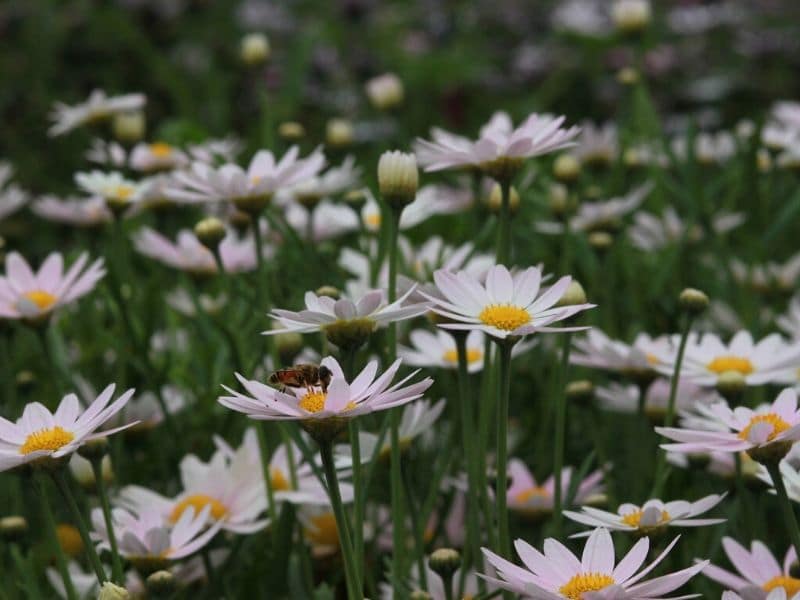
Shasta daisies (Leucanthemum x superbum) are great for adding much contrast to your garden bed because they produce many bright white daisy-like flowers. They are perfect for creating a wildflower look in garden beds and can be used in cut flower plantings, butterfly gardens, or containers.
These bushy flowering plants should be planted behind blanket flowers because they are usually taller, about four feet tall. The blanket flowers will act as a ground cover for these taller flowers and conceal the bare base of your daisies.
These flowers should be placed in a full sun position for optimal blooms, but they can also survive in light shade areas. It is best to plant them in well-drained soil; they prefer rich soil types to poor soil conditions.
Yarrow

Yarrow (Achillea millefolium) will add lots of contrast and color to your garden with its delicate flower clusters. It is an ideal blanket flower companion plant for xeriscape or rainfall gardens because it is remarkably heat and drought-tolerant.
You can grow a yarrow plant next to blanket flowers because it will only grow up to 3 feet tall and does well in garden beds or containers.
This plant comes in various colors that range from soft pastels to vivid yellows, oranges, and reds. You can choose complementary yellow, red, and orange colors if you want to create a garden with a sunny effect. Other colors like white or pastels can also add more contrast to your garden.
Related: Yarrow Companion Plants
Daylilies
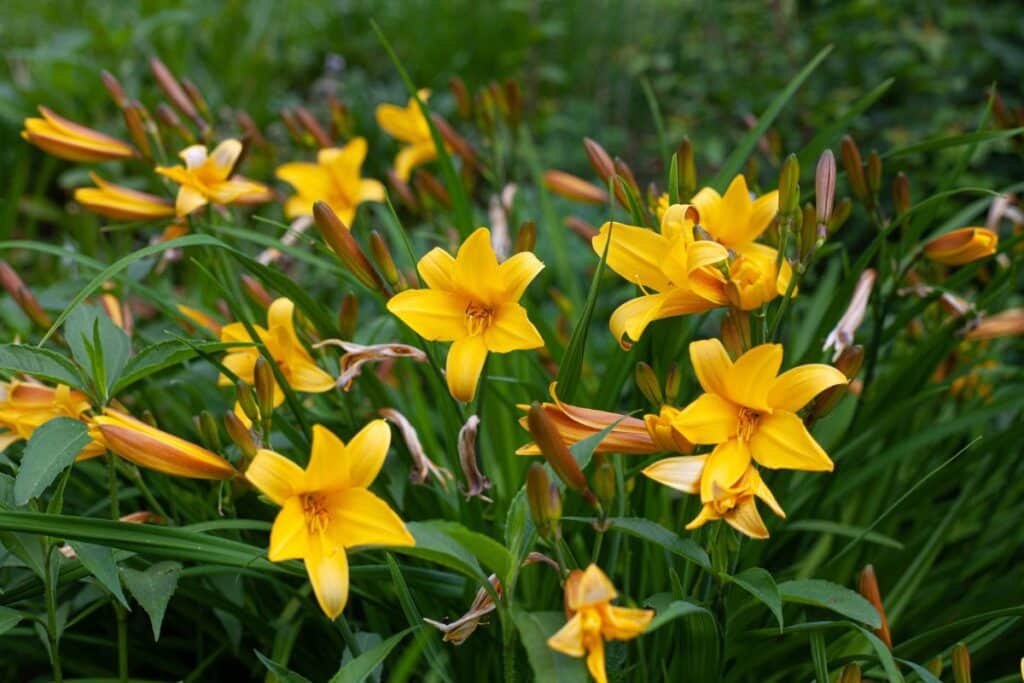
The flowers of daylilies (Hemerocallis) are much bigger and showier compared to blanket flower blooms, which can create lots of dimension and texture in your garden. This perennial plant’s long, thin leaves can also keep your garden nice and lush when they are no longer in bloom.
These flowers come in many different shades, and there are also lots of mixed-color varieties. These flowers are mostly warm-toned, and most daylily colors should look pleasant with blanket flowers.
Daylilies are taller, with some varieties growing up to five feet tall. Because of the height difference, it is usually best to position them in the back with the shorter plants as a border in front.
What NOT to Grow with Blanket Flowers
Some plants will develop poorly in a different garden bed than blanket flowers. This might be due to differences in growing needs or some of the chemicals plants release into the soil. Here is a quick look at some plants to avoid next to blanket flowers.
Brassicas
Most members of the brassica family such as cabbage, cauliflower, or broccoli tend to release chemicals into the soil that inhibit other plants’ growth. If you grow blanket flowers next to brassicas, their growth will be stunted.
Nightshades
Members of the nightshade family, like tomatoes, peppers, and eggplants, will grow well in the same conditions as blanket flowers. Still, it is usually best not to pair them together because these nightshades tend to attract pests that can damage blanket flowers. However, some gardeners grow blanket flowers as a sacrificial plant to protect nightshades from common pests.
Mint
Mint plants grow too aggressively and they can quickly take over your garden beds. This can deprive blanket flowers of needed nutrients and sunlight.
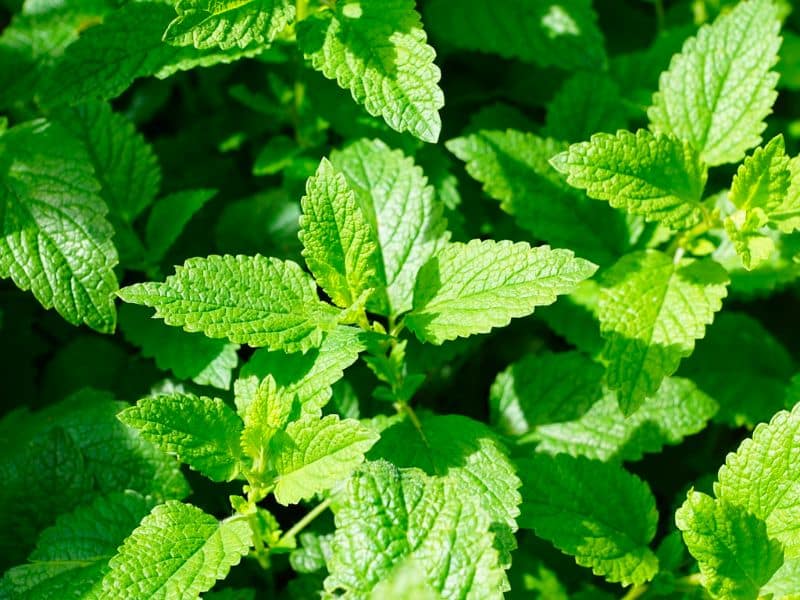
Shade Loving Plants
Shade-dependent plants like begonias and ferns won’t grow well next to blanket flowers because they will scorch in the hot sun.
Landscaping Ideas for Blanket Flowers and Companions
Blanket flowers and the companion plants mentioned in this guide prefer sunny and dryer growing conditions. There are many great ways to use them to perk up the bright parts of your garden, like the following.
Borders or Edges
You can combine blanket flowers with flowers of similar height like yarrow or tickseed to create showy mixed borders along the edge of your garden beds or alongside your walkways. This will create plenty of contrast between the lawn and garden beds or lawn and walkways and will accentuate these parts of your garden.
Container Gardens
Blanket flowers can grow well in containers and can be used to decorate a sunny patio or balcony. You can place single specimen plants and companion species in their pot and group them on your deck to accentuate the differences between the flowers. Or you can mix plants like blanket flowers, coneflowers, and Shasta daisies to create showy mixed containers.
Wildflower Gardens
Most of the flowers we discussed in this guide are ideal for cottage gardens or wildflower gardens. Simply mix and match these different species in the same garden bed with some taller varieties in the back to create a wild and wonderful effect filled with lots of color and life.
Final Thoughts
Blanket flowers look their absolute best if combined with other hardy wildflowers like coneflowers, yarrow, daylilies, Shasta daisies, or tickseed. Together, these flowers can perk up any harsh and sunny area in your garden, or they can be used to decorate sunny patios or balconies.
We hope you had a lot of fun learning about the different companion plants for blanket flowers and that this guide inspired you for your showy garden.
See more:






